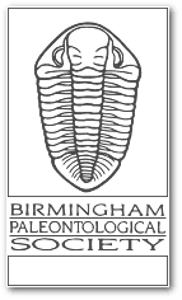Visitor
Paleo in the News
Cats revealed in all their glory in stunning new photographs
Nature documentary shot on Super 8 film is ravishing and unpredictable
Some planets might home brew their own water
Humans evolved faster than any other ape
Black holes are encircled by thin rings of light. This physicist wants to see one
Deep Antarctic waters hold geometric communities of fish nests
RENOWNED PALEONTOLOGIST AND EDUCATOR RECEIVES 2025 ALF AWARD
The Alf Museum is proud to announce this year’s recipient of the Raymond M. Alf Award for Excellence in Paleontological Research and Education, Dr. Bruce MacFadden. The award, given annually, honors a paleontologist who demonstrates exceptional achievement both in original scientific research, as well as in education and outreach at the primary and secondary school (K-12) levels.
Dr. MacFadden is a Distinguished Professor Emeritus from the University of Florida. He is renowned for his research studying fossil mammals, particularly the evolution of horses, and has researched a range of topics from studying ancient climates to using machine learning to identify shark teeth. His work has taken him across the Americas from Barstow, a field site in the Mojave Desert also long studied by the Alf Museum, to sites in Bolivia and Panama. Dr. MacFadden has more than 200 scientific publications and is the author of two books: Fossil Horses and Broader Impacts of Science on Society.
In addition to his paleontological research, Dr. MacFadden also has a respected career as an educator and education researcher. He has over 15 years of experience working to understand how people learn in museums and how scientists and teachers can better collaborate to teach K-12 students. Involving educators with actual scientific research and field work has been a passion of Dr. MacFadden’s. In 2015, he was visiting scientist in Santa Cruz County schools, where he collaborated with science educators to develop lesson plans for elementary schools that focused on local fossils. He has also developed many opportunities for K-12 educators to participate in paleontological field work and research in places like Florida and Panama. Leading a team of teachers, students, and avocational paleontologists, Dr. MacFadden established The FOSSIL Project, an online community for fossil enthusiasts and professionals to connect about fossils and education.
Through his long career, Dr. Bruce MacFadden has established himself as a leader in the paleontological community and continues to push innovation in both research and education to better connect the two. He has served as president for both the Society of Vertebrate Paleontology and the Paleontological Society and has been recognized with multiple awards and fellowships. The Raymond M. Alf Museum of Paleontology is proud to celebrate Dr. MacFadden’s many achievements with this year’s Alf Award.
